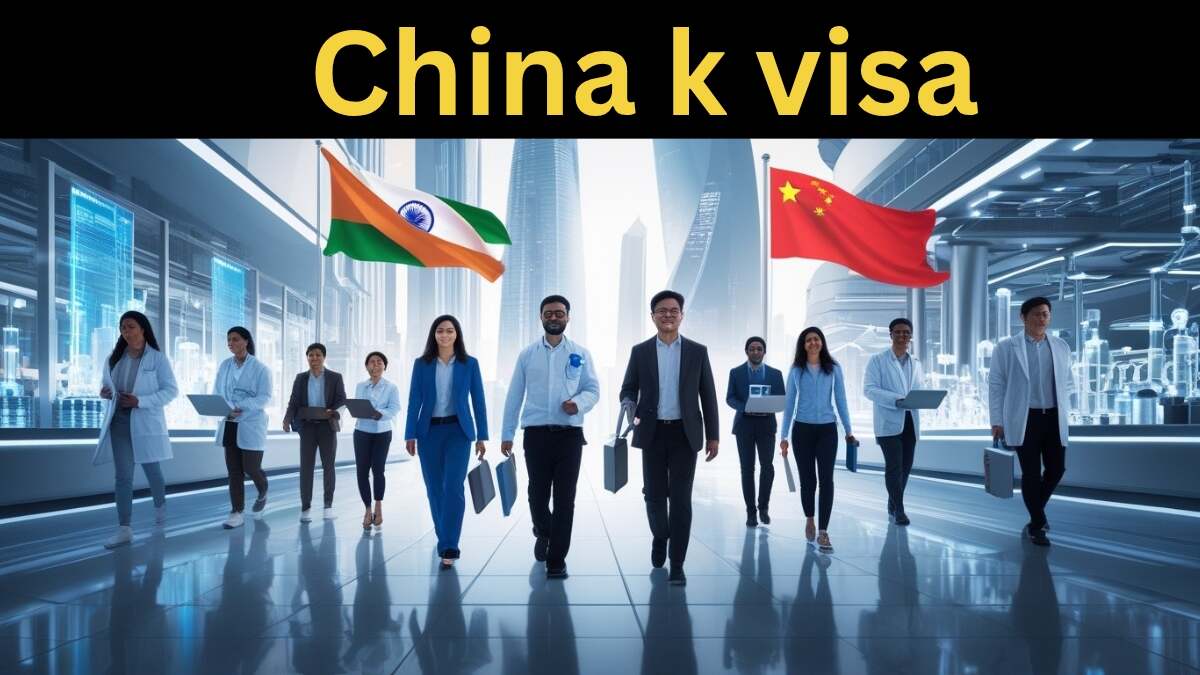The introduction of a new visa by China is an indication of a change in the country’s strategy for luring in foreign talent in the fields of science and technology.
India, where thousands of highly qualified professionals are looking for fresh possibilities following limitations in traditional destinations like the United States, is keenly monitoring the introduction of the K visa, which formally went into force this week.
Analysts are characterizing the program, despite its lack of specifics, as an alternate route for Indian graduates and professionals in scientific research, engineering, technology, and mathematics.
At a time when nations like the US are tightening regulations for work visas, China may be trying to establish itself as a competitive choice with its liberal criteria, which include extended validity and no employer sponsoring requirements.
A Fresh Path for Indian Candidates
The timing of the Chinese move is of importance to many Indian professionals, especially those in the STEM fields. Due to increased processing fees and more stringent requirements, the Indian-dominated US H-1B visa pathway has become more unpredictable. Europe has also been picky about who it accepts. In light of this, China may be able to attract both recent graduates and professionals in the middle of their careers by positioning itself as a new location for scientific and technology personnel.
Unlike previous visas, the K visa promises to give greater freedom, enabling qualified professionals to participate in education, research, cultural exchanges and entrepreneurial endeavors without the urgent necessity for a local employment. The project seems to provide an easier path for Indian students who graduate from Chinese universities—a group that has been increasing in recent years—to remain and acquire experience in the Chinese research environment.
The growing number of highly qualified engineers and researchers in India, according to industry analysts, may make them excellent prospects. They may be able to overcome early obstacles in China, where language is often a barrier, thanks to their solid command of English and experience working for multinational corporations.
Beijing’s Strategic Move
The introduction of the K visa is a component of China’s broader goal to establish itself as a center for talent and knowledge from across the world, particularly in the fields of science and technology. Authorities are eager to access the global talent pool as local investment in R&D continues to increase. Beijing is demonstrating flexibility by not tightly linking the visa to immigration or work permits in an effort to draw in more applicants who would otherwise choose to go to the West.
According to Chinese official media, the action demonstrates the nation’s “confidence and openness” in this new age. According to commentary, China is aggressively grabbing the opportunity to position itself as an alternative draw for international experts, even as other countries are tightening their regulations.
At a time when movement has become more complicated, this presents an opportunity for Indian candidates. Although there are still questions, especially over the precise rights or employment that the visa ensures, the K visa provides a unique opportunity in the biggest economy in Asia.
Chinese domestic backlash
However, the response has not been favorable in China. Many residents have publicly questioned the new policy’s usefulness at a time when millions of Chinese graduates are having difficulty finding work, sparking contentious conversations on the internet. Social media posts express concerns that newcomers would increase competitiveness in a labor market that is already oversaturated.
According to some users, native students are being subjected to intense academic pressure, yet immigrants are then given more possibilities. Others question whether Beijing will really be able to attract “top-level” foreign specialists, citing political, cultural, and linguistic barriers.
The increase in xenophobic comments, particularly against Indians, who are being associated with the program because to their significance in skilled migration worldwide, is more worrisome. This has compelled Chinese state-run media sources to write stories supporting the K visa, emphasizing that it should be seen as a tool for collaboration and exchange rather than being equated to US-style immigration laws.

